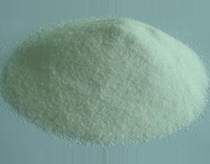Product Center
Contact Us

Guangdong Zhongke Water Purification Materials Co., Ltd.
Address: 1/F, Building No. 5, No. 255, Guantai Avenue, Nancheng District, Dongguan City, Guangdong Province
Address: No. 100, Qima Road, Jingjia Town, Huantai County, Zibo City, Guangdong Province (factory)
Address: Qilidian, Train Station North, Licheng County, Shanxi Province (factory)
Tel.: 0769-22817929 22817976
Fax: 0769-22424976
E-mail: gdzkpac@126.com
Website: www.gdzkjscl.com www.gdzkpac.com

 Your current position:Home > Product Center >
Your current position:Home > Product Center >
Anionic PAM
< ReturnAbbreviation: PAM, Polyacrylamide is the water-soluble and linear high polymers formed by polymerization of acrylamide (AM) monomers initiated by free radicals, and is not soluble to most of organic solvents.
Ordering hotline: 0769-22817929
- Detailed introduction
Abbreviation: PAM, Polyacrylamide is the water-soluble and linear high polymers formed by polymerization of acrylamide (AM) monomers initiated by free radicals, and is not soluble to most of organic solvents. Besides, PAM has good flocculability and can reduce the frictional resistance between liquids. According to ionic properties, PAM can be divided into four types: nonionic PAM, anionic PAM, cationic PAM and amphiprotic PAM.
Mesh size of PAM: mesh size refers to the grain size or coarseness of materials, and is the number of squares per unit area. In general, it is defined as the number of meshes in a 1 inch *1 inch area, i.e. number of meshes of screen mesh. For example, 600 meshes mean there are 600 square meshes per square inch. The mesh size of PAM is 20 meshes to 80 meshes, which means its mesh size is between 0.85mm~0.2mm. This is the mesh size of granular PAM. For powdery PAM, its mesh size can be controlled around 100 meshes. The larger the mesh size is, the more soluble the PAM is. Moreover, quality of PAM does not only depend on mesh size!
PAM is water-soluble high polymers and is not soluble to most of organic solvents. Besides, PAM has good flocculability and can reduce the frictional resistance between liquids.
As the domestic market demand of PAM is constantly expanding and PAM export is increasing, the domestic PAM industry ushered a new development opportunity. However, for backward in production technology, domestic PAM companies are still using intermittent production process, which consumes much energy and is inefficient and costly; therefore, development of PAM types is restricted. At present, the domestic PAM types are mainly dry powers and colloids, while PAM emulsion are rare. But in foreign countries, there are many PAM types including emulsion, suspended emulsion, powder and ball-shaped PAM. Besides, most of the PAM products in foreign countries are patent products, and more than 50% of these products are cationic PAM. However, most of the domestic cationic PAM products are imported other than produced domestically.
Notes for cationic PAM application:
1. Flocculus size: flocculus size may affect the speed of dewatering; oversized flocculus will constrain much water and thus reduce the dryness of mud cake. Furthermore, flocculus size can be adjusted through selection of the molecular weight of PAM.
2. Sludge features: in the first place, learn about the sludge source, properties, ingredients and share of sludge. Based on property, sludge can be classified into organic sludge and inorganic sludge. Cationic PAM is used for treatment of organic sludge and correspondingly, anionic PAM flocculant is used to treat inorganic sludge. When the sludge is highly alkaline, cationic PAM is applicable and when the sludge is highly acidic, anionic PAM is not applicable. Moreover, sludge with high solid content requires more PAM for treatment.
3. Flocculus intensity: flocculus should be stable and will not break under shearing action. Improvement of the molecular weight of PAM or selection of proper molecular structure helps improve flocculus stability.
4. PAM ionicity: with respect to dewatered sludge, flocculants of different iconicity can be used for test selection of the flocculant that has the most proper ionicity for treatment. In this way, the optimal effect can be obtained and both the amount used and cost can be minimized.
5. Dissolution of PAM: flocculant can take effects only when it is thoroughly dissolved. When the speed of dissolution needs to be quickened, concentration of PAM solution can be increased to achieve this.







